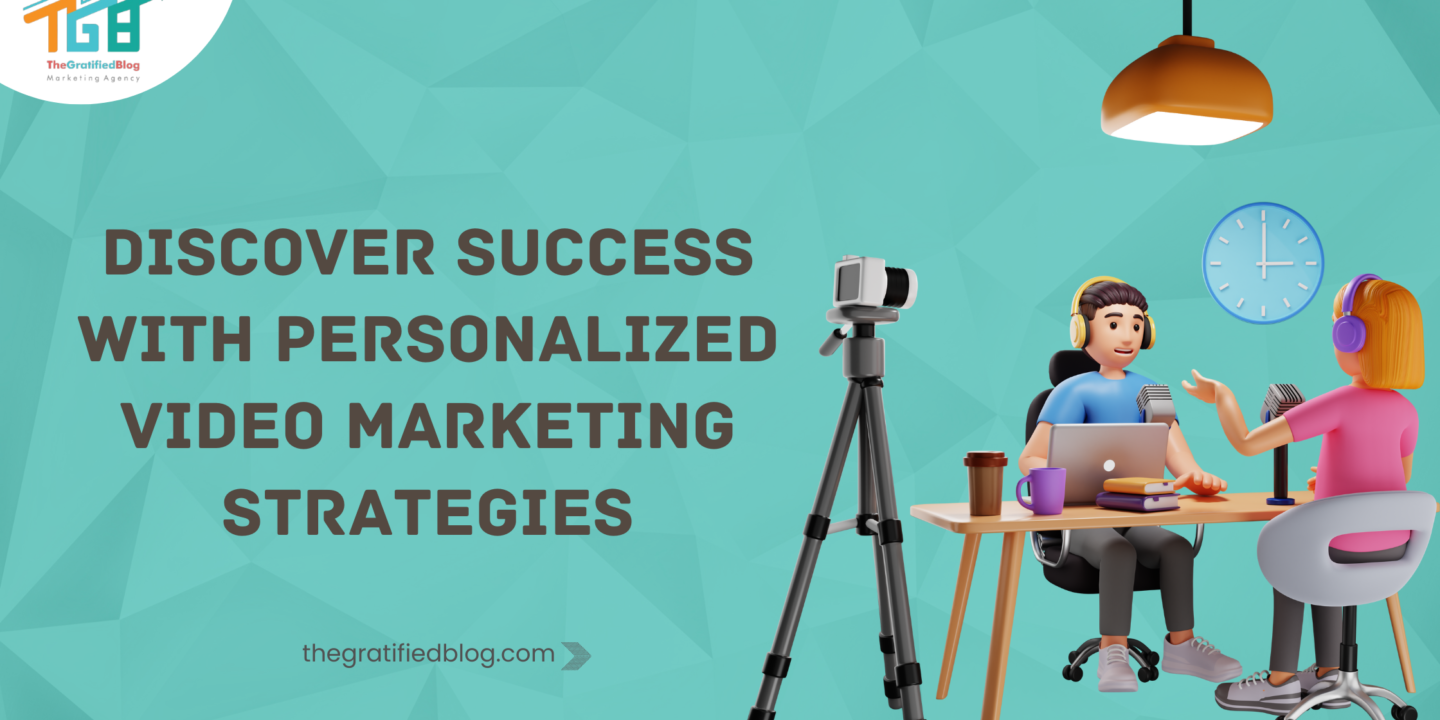
In the dynamic realm of digital marketing, personalized video marketing has become a powerful influence in captivating audiences, driving conversions, and fostering long-term customer relationships. As businesses navigate the ever-evolving landscape of online engagement, the need for tailored, interactive, and impactful content has become paramount.
This blog delves into the intricacies and potential of personalized video marketing, exploring its nuances, benefits, strategies, examples, and faqs.
Join us on a journey through the power of customized storytelling and data-driven customization, unlocking the keys to engaging, converting, and retaining your audience in the digital age.
What Is Personalized Video Marketing?
Personalized video marketing is a targeted approach that crafts and delivers tailored video content to viewers, considering their preferences, behaviors, and demographic details.
It involves customizing content for specific audience segments or individual viewers, such as addressing them by name and showcasing products or services aligned with their past interactions or interests.
How does it differ from traditional video marketing?
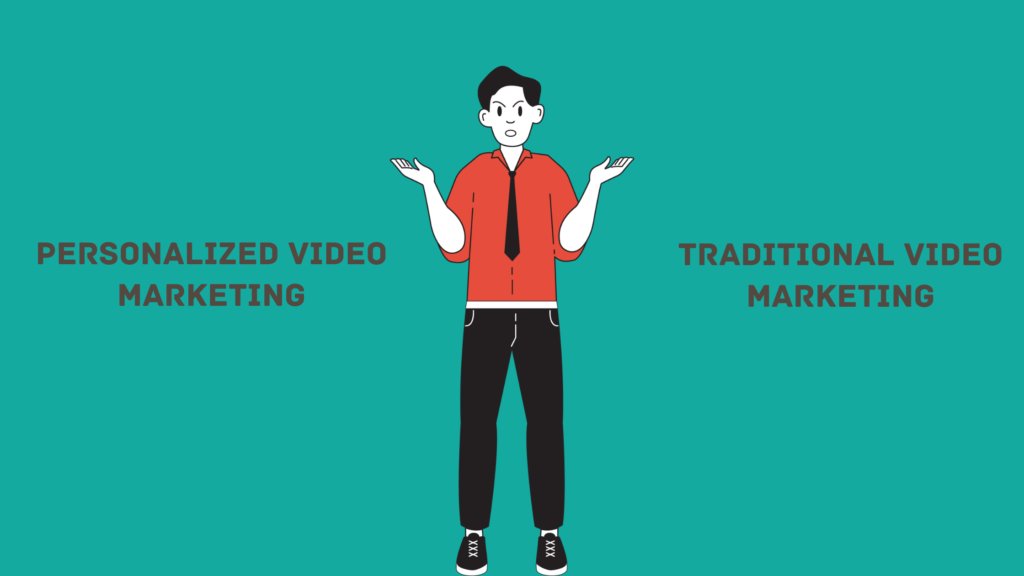
- Targeting and Relevance: Personalized video marketing targets specific audience segments or individuals with content highly relevant to their needs, interests, and preferences. In contrast, traditional video marketing often adopts a broader approach, targeting a general audience without personalized messaging.
- Engagement and Interaction: Personalized video marketing enhances engagement by creating interactive experiences tailored to the viewer. This may include interactive elements like clickable buttons, personalized recommendations, or dynamic content based on real-time data. Traditional video marketing typically offers passive viewing experiences without interactive features.
- Conversion and Retention: Personalized video marketing is designed to boost conversion rates and improve customer retention by delivering content that resonates with each viewer personally. By addressing specific pain points, offering personalized solutions, and nurturing ongoing relationships, customized video marketing fosters stronger connections compared to the more generic messaging of traditional video marketing.
Benefits Of Personalized Video Marketing

- Improved Customer Engagement: Personalized video marketing fosters higher levels of customer engagement by delivering content that resonates deeply with each viewer. For example, a clothing brand can create personalized styling videos based on a customer’s purchase history and style preferences. This leads to more meaningful interactions and increased time spent engaging with the brand’s content.
- Increased Conversion Rates: The targeted nature of personalized video marketing significantly boosts conversion rates. Viewers who receive content that speaks directly to their interests and pain points are more inclined to encourage specific actions, like purchasing or subscribing to a service. For instance, an e-commerce platform can send personalized product recommendation videos to customers, showcasing items they are likely interested in based on their browsing history and previous purchases, leading to higher conversion rates than generic promotional videos.
- Enhanced Customer Retention and Loyalty: Personalized video marketing is vital in nurturing customer relationships and fostering loyalty. By consistently delivering relevant and valuable content, brands can strengthen customer connections over time. For example, a fitness app can send users personalized workout videos and progress updates, encouraging them to remain actively involved and dedicated to their fitness goals. This customized approach builds trust and loyalty, reducing churn rates and increasing customer lifetime value.
- Cost-Effectiveness Compared to Traditional Marketing Methods: While personalized video marketing involves initial setup and data analysis, it can be more cost-effective in the long run compared to traditional marketing methods. By targeting specific audience segments with personalized content, brands can achieve higher ROI and lower customer acquisition costs. For example, a software company can create personalized demo videos for different user personas, reducing the need for extensive sales efforts and increasing the likelihood of converting leads into paying customers. This targeted approach maximizes marketing budget efficiency and drives measurable results.
Now that you’re familiar with personalized video marketing, its distinctions, and the advantages it offers, let’s explore the tactics for implementing it.
Strategies For Implementing Personalized Video Marketing
Segmenting Your Audience For Targeted Videos

Segmentation is a foundational strategy in personalized video marketing. It allows you to divide your audience into distinct groups based on demographics, behaviors, interests, or purchasing history. This segmentation will enable you to develop precise targeting strategies and videos that resonate with each segment’s unique preferences and needs.
Take, for instance, a travel agency that can divide its audience into adventure seekers, luxury travelers, and family vacationers. Each segment can receive personalized video content showcasing destinations, activities, and packages tailored to their interests. Segmenting your audience improves relevance and enhances the effectiveness of your customized video campaigns by ensuring that the content speaks directly to the intended viewers.
Creating Personalized Video Content Based On Customer Data

Once you’ve segmented your audience, the next step is to leverage customer data to craft personalized video content. This data can include past interactions, purchase history, browsing behavior, preferences, and demographic information.
For instance, an online retailer can use data analytics to create personalized product recommendation videos for each customer, highlighting items they are likely to buy based on their past online activities and purchase behavior.
By incorporating customized messages, visuals, and offers, these videos can drive higher engagement and conversion rates. Connecting this strategy to audience segmentation, customer data enables you to customize content aligned with the preferences and requirements of every audience segment, enhancing the overall effectiveness of your personalized video marketing campaigns.
Incorporating Interactive Elements In Personalized Videos

Interactive elements add a layer of engagement and interactivity to personalized videos, making the viewing experience more immersive and memorable for viewers. These elements can include clickable buttons, quizzes, surveys, customized CTAs, and interactive hotspots.
Imagine a real estate agency developing an interactive video tour of a property, allowing viewers to click on different rooms for more information or to schedule a viewing. By encouraging active participation, interactive elements increase viewer engagement and provide valuable data insights into viewer preferences and actions. This data can further personalize future video content and optimize campaign performance.
Leveraging Automation And AI For Scalable Personalized Video Campaigns

Automation and AI technologies are crucial in efficiently scaling personalized video campaigns. Artificial intelligence algorithms can analyze extensive amounts of customer data In real-time, allowing you to identify patterns, predict preferences, and automate customized video content creation and delivery.
For instance, an e-learning platform can use AI to generate personalized video lessons based on each student’s learning style, progress, and areas of interest. By automating the content personalization process, you can deliver timely and relevant videos to your audience at scale, improving efficiency and maximizing the impact of your personalized video marketing efforts.
This strategy ties back to creating personalized video content based on customer data, as automation and AI enable you to leverage data insights effectively to create dynamic and relevant video experiences for each viewer.
Best Practices For Personalized Video Marketing
- Ensure Data Privacy and Compliance with Regulations: When implementing personalized video marketing, it’s crucial to prioritize data privacy and adhere to relevant regulations. This includes obtaining consent for data collection, securely storing and handling customer data, and complying with laws such as GDPR or CCPA to maintain trust and credibility with your audience.
- Test and Optimize Your Personalized Video Campaigns Regularly: Continuously testing and optimizing your personalized video campaigns allows you to refine content, messaging, and targeting for maximum effectiveness. Conducted A/B testing, analyzed performance metrics, and made data-driven adjustments to improve engagement, conversion rates, and overall campaign success.
- Incorporate Storytelling and Emotional Appeal in Personalized Videos: Storytelling and emotional appeal are potent tools in personalized video marketing. Create stories connecting with your audience’s experiences, aspirations, and emotions. Use storytelling techniques to create compelling, relatable narratives that captivate viewers and drive meaningful connections with your brand.
- Continuously Update Customer Data for Accurate Personalization: Regularly update and refine your customer data to maintain accurate personalization. This includes collecting new data points, monitoring customer preferences and behavior changes, and using advanced analytics tools to segment and target audiences effectively. Accurate and up-to-date customer data enables precise targeting and ensures personalized content remains relevant and impactful.
Now that you’re well-informed about personalized video marketing, let’s discuss real-life examples of brands utilizing these techniques.
Examples Of Personalized Video Marketing
Cadbury
Cadbury, a well-known candy company, is famous for charming its customers. They excel at personalizing their marketing efforts by creating custom gift packs with the recipient’s name. This slight touch adds a special feeling to the occasion and shows that Cadbury cares about making moments memorable.
Recently, Cadbury took personalization a step further by using videos in their campaigns. They invited their Facebook followers to create personalized videos for their loved ones. Users just needed to enter a name and share a photo, and they could send the customized video to anyone they wished.
The lesson from Cadbury’s approach is straightforward: personalization can make a significant impact. Their professional video templates made the process easy and effective, fitting perfectly with their brand image. Cadbury’s strategy is an excellent example of creating an emotional and personalized campaign.
Nike
Nike, a marketing powerhouse, showed its prowess with a personalized video back in 2015. Their famous slogan, “Just Do It,” resonates throughout their brand, reflecting a commitment to helping athletes worldwide reach their peak performance.
In one memorable campaign, Nike used personalized data to create emotional animated videos showcasing each user’s sporting achievements of the year. The goal was to inspire and motivate viewers to push themselves further.
The lesson from Nike’s personalized video is clear: it’s not just about putting a name on a video. They used specific data like distance run and marathon stats to create a unique experience for each viewer. This approach shows Nike’s dedication to being more than just a sales-driven brand; they genuinely want to be part of their consumers’ growth and success.
Facebook’s strategy for engaging its user base is remarkable, contributing to its status as one of the largest social media platforms today. They consistently use personalized videos to create memorable experiences for their users, such as the nostalgic “Walk Down Memory Lane,” Faceversary, and Friendversary videos. These initiatives showcase Facebook’s ability to connect emotionally with its users through personalized content.
The critical lesson from Facebook’s approach is that they leverage user data to craft videos that evoke emotions like nostalgia, strengthening the bond between users and the brand. This personalized approach fosters a deep connection and engagement, contributing to Facebook’s ongoing success as a social media giant.
FAQs
Q1. What Is Personalized Video Marketing?
A. Personalized video marketing involves creating customized content for each viewer’s preferences, behaviors, and demographic information. It aims to deliver highly relevant and engaging content to enhance audience connection and drive desired actions.
Q2. How Does Personalized Video Marketing Benefit Businesses?
A. Personalized video marketing can benefit businesses in various ways, including improved customer engagement, increased conversion rates, enhanced brand loyalty, and cost-effectiveness compared to traditional marketing methods. By delivering personalized content, businesses can create meaningful interactions with their audience and drive better marketing results.
Q3. What Are Some Critical Strategies For Implementing Personalized Video Marketing?
A. Critical strategies for implementing personalized video marketing include segmenting your audience for targeted videos, creating customized video content based on customer data, incorporating interactive video elements, and leveraging automation and AI for scalable, customized campaigns. These strategies help businesses deliver highly relevant and impactful video content to their audience.
Conclusion
Given your knowledge about personalized video marketing, why not integrate it into your marketing strategy today and witness the impactful results it can generate? Embracing personalized video marketing can enhance customer engagement, boost conversion rates, and foster stronger brand loyalty.
Don’t wait any longer—take advantage of this powerful Approach to establish a deeper connection with your audience and more effectively achieve your marketing goals.
However, if you still have any questions related to the topic, please leave them in the comments section. We will be happy to answer you.
Thanks for reading 🙂




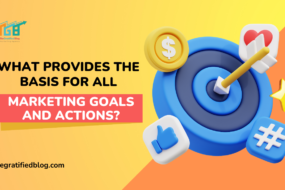
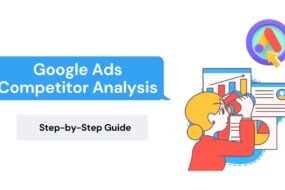

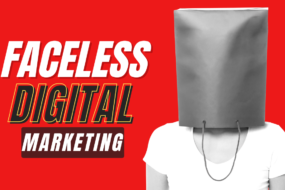
No Comments